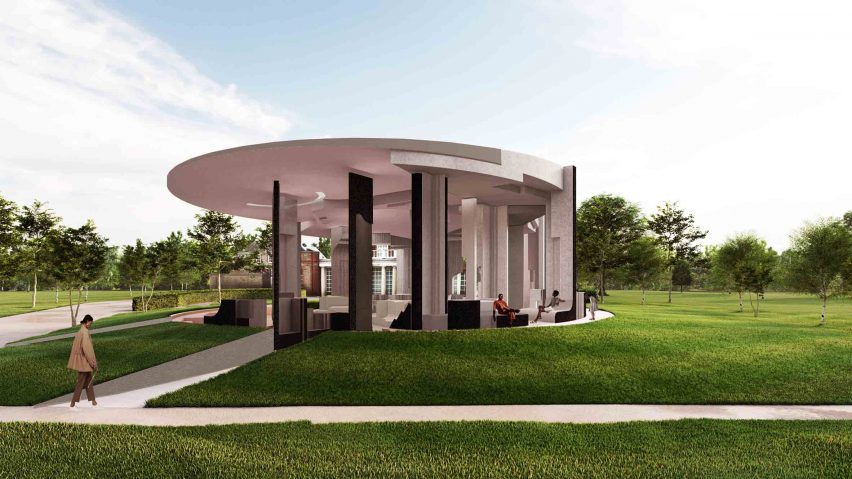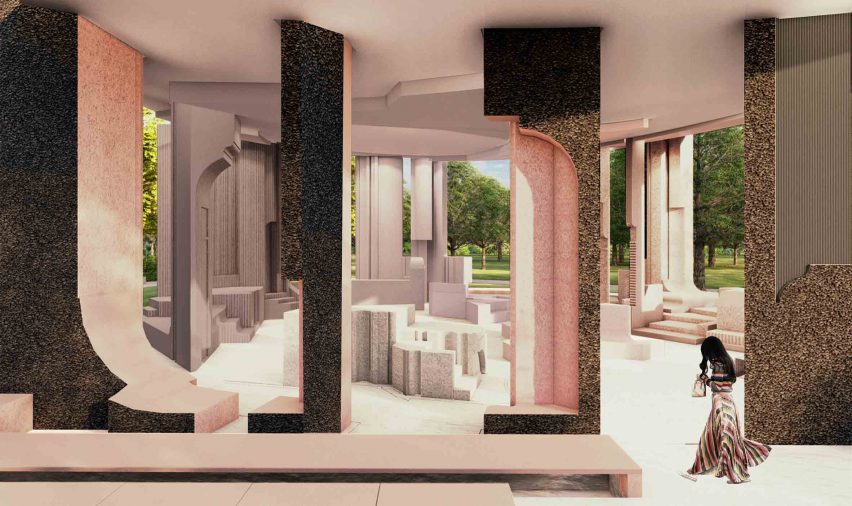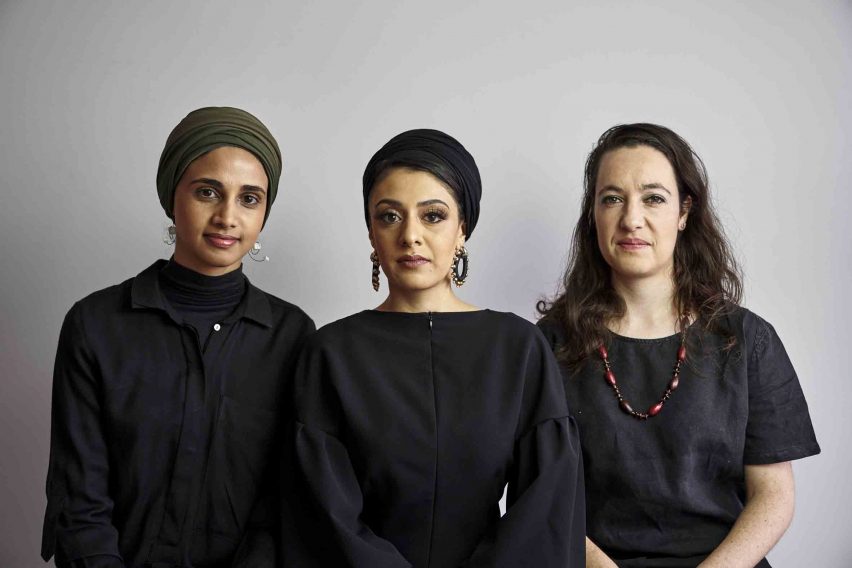
Counterspace designs Serpentine Pavilion 2020 to be built with recycled bricks
South African architecture studio Counterspace will use cork and bricks made of recycled construction waste to build this year's Serpentine Pavilion, which refers to the experiences of London's migrant communities in its design.
K-Briq modules, a new technology from Kenoteq that makes bricks from 90 per cent recycled construction and demolition waste, will be used for the pavilion.
Because these bricks don't require firing, they produce just a 10th of the carbon emissions of standard fired bricks, according to Kenoteq.
The other main material will be cork sourced from Portuguese producer Amorim. Cork is considered a more sustainable alternative to many woods because it doesn't require cutting the tree down to harvest its bark.

Counterspace's pavilion, which is the 20th Serpentine Pavilion, will centre on the experiences of London's migrant communities.
Different textures, shapes and gradients will be used to reference places in London that have large migrant populations, such as Brixton, Hoxton, Hackney, Whitechapel, Edgware Road, Peckham, Ealing and North Kensington.
"The pavilion is itself conceived as an event — the coming together of a variety of forms from across London over the course of the pavilion’s sojourn," said lead architect Sumayya Vally
"These forms are imprints of some of the places, spaces and artefacts which have made care and sustenance part of London’s identity."

Moveable elements will allow parts of the Serpentine Pavilion 2020 to be taken and put on display in different neighbourhoods around London. Here they will host community events before being returned to the main structure at the end of the summer.
This live programme is part of the Serpentine's Back to Earth series, which explores how architecture can create spaces outside of hierarchy, promote wellbeing, and evolve with the environment.
Counterspace's three directors Sumayya Vally, Sarah de Villiers and Amina Kaskar, who founded the studio in Johannesburg in 2015, will be the youngest architects to design the Serpentine Gallery's summer pavilion.
Counterspace is also only the third studio founded exclusively by women to receive the Serpentine Gallery commission, following Zaha Hadid in 2000 and Frida Escobedo in 2018.
Last year, Counterspace used mirrors to reflect the pollution that hangs over Johannesburg from mining waste.
Counterspace were chosen by the Serpentine's artistic director Hans Ulrich Obrist and CEO Bettina Korek, who was appointed in 2019 after Yana Peel resigned.
Advisors on the project included architects David Adjaye, Lesley Lokko and David Glover, alongside the Serpentine's head of construction Julie Burnell and the project's curator Natalia Grabowska.
"The idea of working with different communities is very important for us and Counterspace's proposal does this in a remarkable way," said Ulrich Obrist. "We were totally convinced by the social dimension of their practice."
"They bring an African perspective, an international perspective but they are working with locations and communities right here in London and their pavilion design is inspired by that work."
In a recent interview with the art newspaper Ulrich Obrist said that "ecology will be at the heart of everything" the Serpentine Galleries will do going forward.
Last year's Serpentine Pavilion was designed by Japanese architect Junya Ishigami, who built a hill from stacked slate piles.